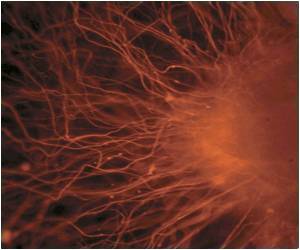For the first time, scientists have isolated adult stem cells from human intestinal tissue.

"Not having these cells to study has been a significant roadblock to research," said senior study author Scott T. Magness, PhD, assistant professor in the departments of medicine, biomedical engineering, and cell and molecular physiology at UNC. "Until now, we have not had the technology to isolate and study these stem cells – now we have to tools to start solving many of these problems"
The UNC study, published online April 4, 2013, in the journal Stem Cells, represents a leap forward for a field that for many years has had to resort to conducting experiments in cells from mice. While significant progress has been made using mouse models, differences in stem cell biology between mice and humans have kept researchers from investigating new therapeutics for human afflictions.
"While the information we get from mice is good foundational mechanistic data to explain how this tissue works, there are some opportunities that we might not be able to pursue until we do similar experiments with human tissue," lead study co-author Adam D. Gracz, a graduate student in Magness' lab. Megan K. Fuller, MD, was also co-lead author of the study.
The Magness lab was the first in the United States to isolate and grow single intestinal stem cells from mice, so they had a leg up when it came to pursuing similar techniques in human tissue. Plus the researchers were able to get sections of human small intestine for their experiments that otherwise would have been discarded after gastric bypass surgery at UNC.
To develop their technique, the researchers investigated whether the approach they had taken in mice would work in human tissue. They first looked to see if the same molecules they had found stuck on the surface of mouse stem cells were also present on human stem cells. The researchers established that these specific molecules – called CD24 and CD44 -- were indeed the same between the two species. They then attached fluorescent tags to these molecules and used a special machine called a fluorescence activated cell sorter to identify and isolate the stem cells from the small intestine samples.
Advertisement
"Now that we have been able to do this, the next step is to carefully characterize these populations to assess their potential," said Magness. "Can we expand these cells outside of the body to potentially provide a cell source for therapy? Can we use these for tissue engineering? Or to take it to the extreme, can we genetically modify these cells to cure inborn genetic disorders or inflammatory bowel disease? Those are some questions that we are going to explore in the future."
Advertisement













